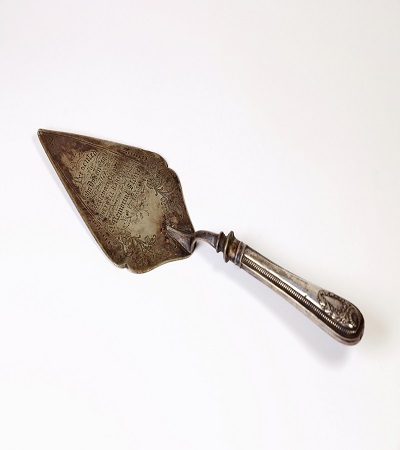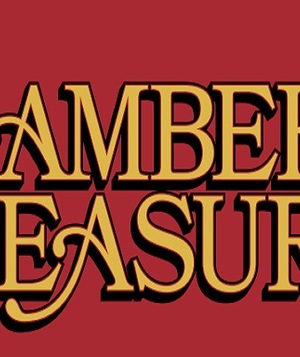Chamber of Treasures
Welcome to Barnsley’s Chamber of Treasures, a hidden area of the museum filled with curious and historic artifacts. Not all the objects here glisten like gold but they do tell precious stories from the rich history of our borough.
The earliest museums in Britain were often collections of rare and ‘unusual’ objects from around the world. But sometimes these treasures were taken unfairly and displayed without the voices of the people who used them. Museum curators of the past were seen as the only expert voice in the museum. However, in this Chamber of Treasures the objects reveal the stories of our local communities, and they are valuable to us because of this.
Barnsley’s first museum was on the top floor of the Public Hall, now The Civic. It was opened in 1878 and was curated by the Barnsley Naturalists Society, featuring a rare collection of natural history and taxidermy. This museum closed many years ago, but lots of Barnsley folk remember the mysterious displays. Like the Public Hall Museum, we hope the Chamber of Treasures inspires people who are interested in the little corners of museums where hidden stories can be discovered.
The Chamber of Treasures has been made possible thanks to support from the Department for Culture, Media and Sport (DCMS), the Wolfson Foundation, Arts Council England and Barnsley Museums Heritage Trust which help to conserve and promote the cultural heritage of the town. Below are just a small selection of the treasures on display, you can watch our 'One Minute Treasures' series and listen to audio descriptions which we will shortly be adding to.
Embroidered Child’s Waistcoat
Sewn with real silver thread onto brushed wool this Indian style waistcoat would have been a very expensive item of clothing. The silver thread still shines which suggests it has not been worn a great deal. The waistcoat was given to Cannon Hall Museum a long time ago but we have no information on who wore the item.
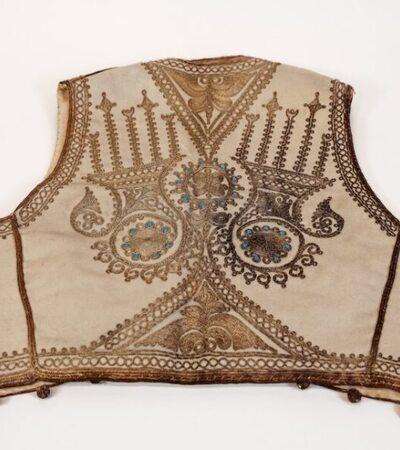
Gold Pocket Watch
This watch was presented to Sergeant Horace Holmes by New Monkton Colliery for gallant service in the First World War. Horace moved to Royston as a teenager and later became a coal miner and a decorated soldier. He eventually became a Member of Parliament in 1946.
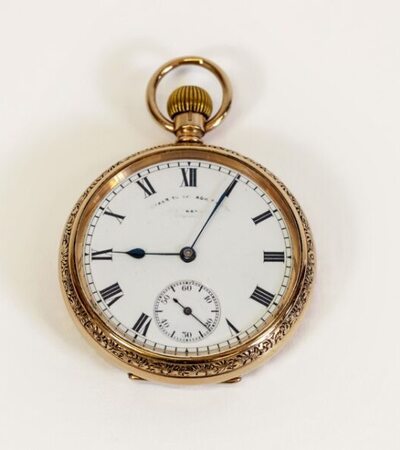
Stars and Stripes Knee High Boots
Mikki Kenworthy wore these fabulous boots to celebrate the first Barnsley Pride event since the coronavirus pandemic. Mikki is a local treasure, founding Trans Barnsley to support the local transgender and non-binary community. Mikki is also training to be a church minister.
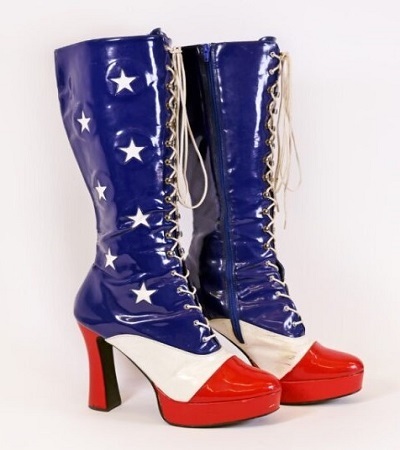
Charles II Silver ‘Heart’ Cufflink
This silver cufflink is a romantic treasure find, discovered by a Barnsley metal detectorist. It features a heart to celebrate the marriage of King Charles II to Catherine of Braganza in 1662.
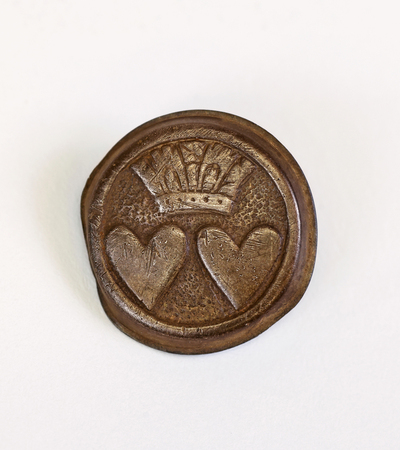
Handmade Domino Set
Made by carpenter Alfred Senior out of the keys from an old piano from Wentworth Castle and given to his family living at Menagerie House. Donated by Diana Pattison, her great grandmother Susannah and grandmother Ada spent many happy hours playing and the scores can still be seen on the lid.
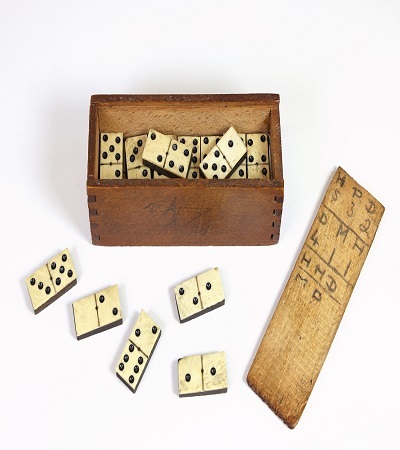
Silver Cutlery Set
Made by master jeweller Solomon Krakauer, this object represents a story of the town’s historic Jewish community. Solomon and his son Max emigrated from Prussia (now modern Germany) to build a new life making fine jewellery, clocks and metalware in Barnsley.
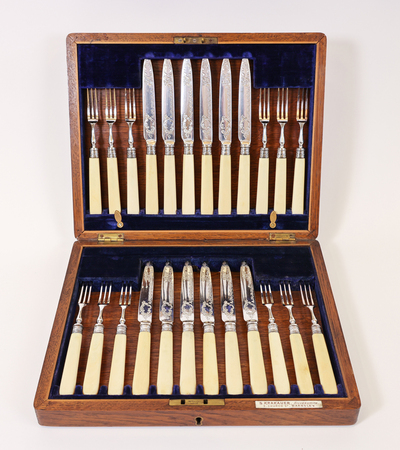
ARP Badge
The badge belonged to Jim Ibsen, an Air Raid Protection warden during the Second World War. Jim was nearly struck by the piece of shrapnel which landed on his doorstep on Pollitt Street. The shrapnel metal is from exploded anti-aircraft shells which were fired during air raids to damage enemy aircraft.
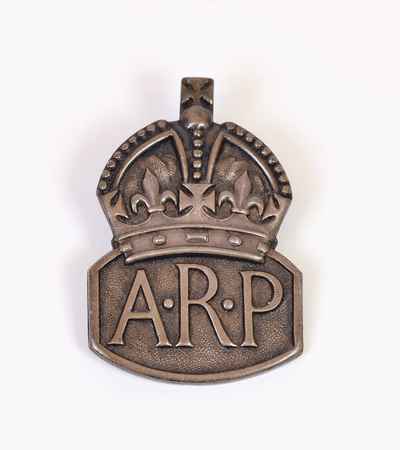
Granite Curling Stone
Donated by Diana Pattison from her ancestors who were servants at Wentworth Castle. Captain Wentworth was a parliamentary curler in the late 1890s and he built one of the first winter curling rinks in England. Could this treasure have originally belonged to Captain Wentworth himself?
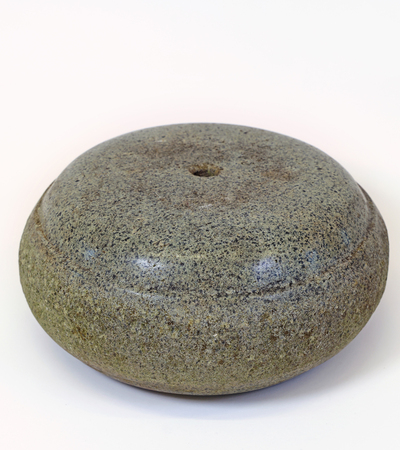
Olympic Running Vest
Worn by Barnsley’s own champion Dorothy Hyman at the 1960 Olympic Games in Rome - the first Olympics to be fully televised
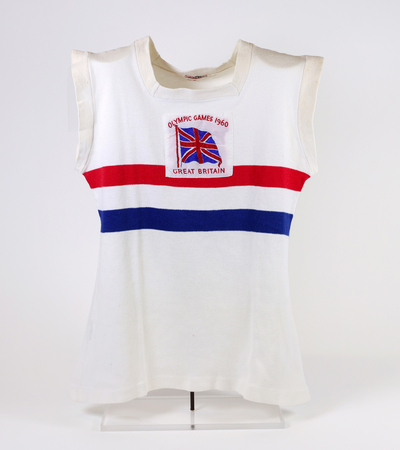
Chest Expanders
Used to exercise the pectoral muscles, this set belonged to former Mayor of Barnsley Arthur Jepson. Arthur’s muscles must have made it easier to wear the heavy mayoral chains of office.
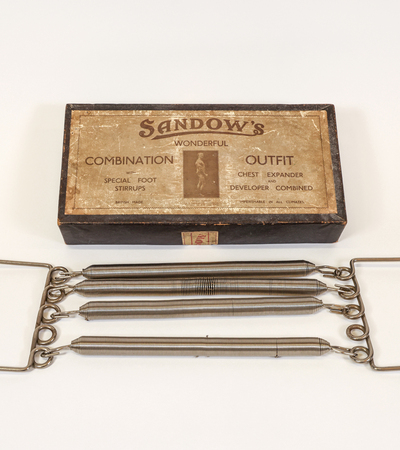
Blue Jubilee Sherry Decanter
Donated by friend of the museum Keith Tennant, this vivid blue bottle was made by Wood Brothers to mark Queen Elizabeth II’s Jubilee in 1977. One of only 50 ever made, it represents the skill of Barnsley’s expert glass makers.
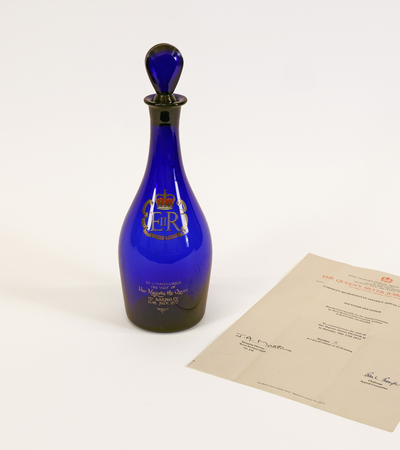
Commemorative Trowel
This trowel was used by John Dyson Esq to lay the foundation stone of the Honeywell Wesleyan Chapel on Bridge Street on Tuesday 13 November 1883. The chapel closed in 1987 and the site is currently occupied by a row of houses. Kindly donated by Matthew Dunford.
